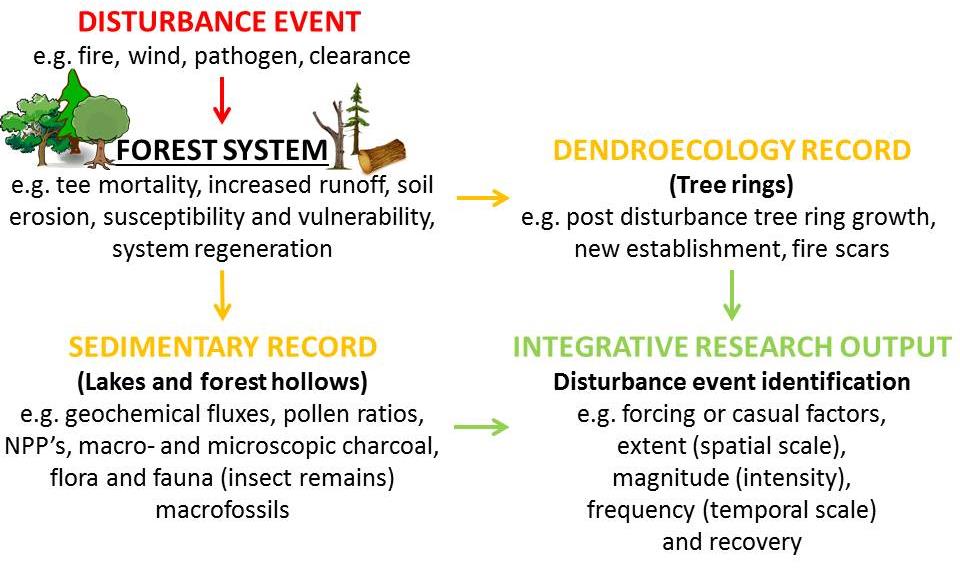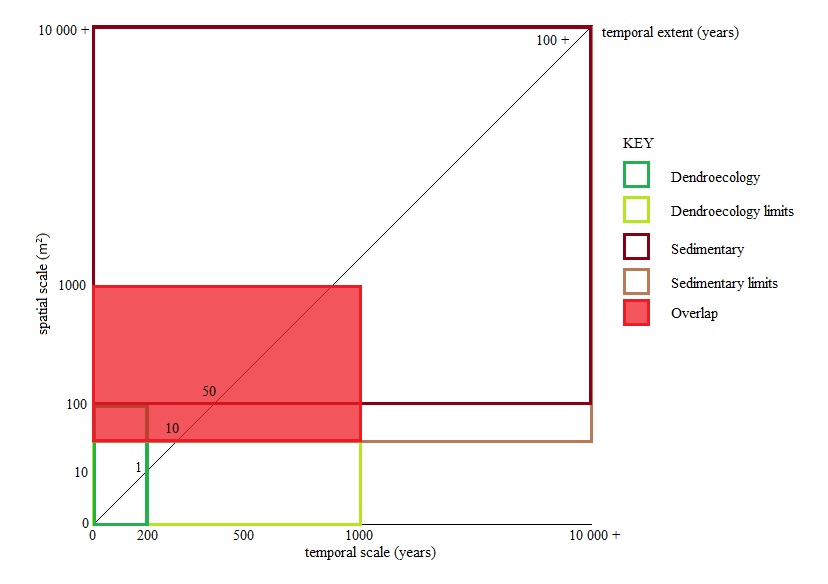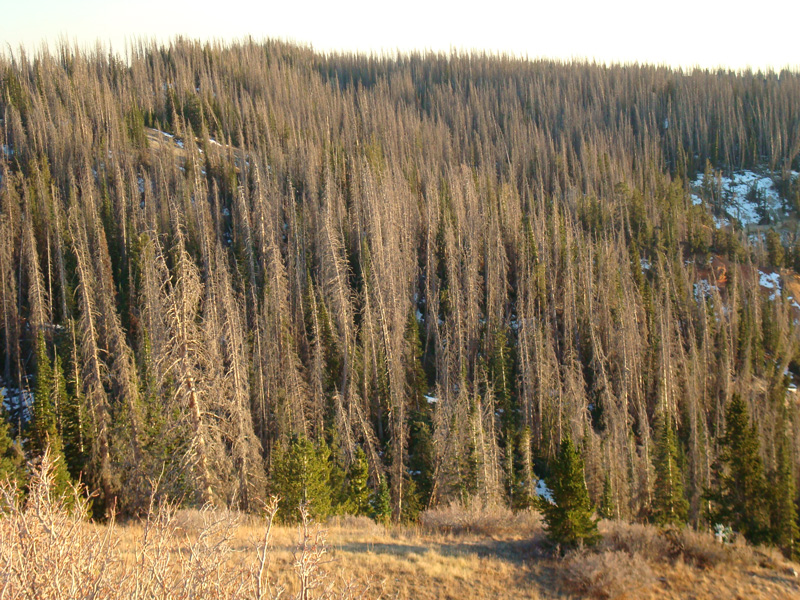- Home
- Science Introduction
- Wg
- Former Initiatives and Working Groups
- Forest Dynamics
- Forest Dynamics Scientific Goals
Forest Dynamics scientific goals
The Forest Dynamics working group was active from 2016 to 2019. The planned goal was to develop new techniques for the integration of sedimentary paleoecological and dendroecological data to better understand reconstructions of forest disturbances.

The group had three specific objectives:
1. Compile a spatial geodatabase of reconstructed disturbances from the sedimentary and dendroecology disciplines. Measurable outcome: database.
2. Integrate sedimentary paleoecological and dendroecological disturbance histories through (a) extrapolating the data onto a common timescale (e.g. 20 year intervals) using Bayesian age-depth modelling to underpin the integration of sedimentary and tree-ring records, and (b) extending the current knowledge of historical forest disturbance dynamics to millennial timescales, beyond the temporal limits of dendroecology by using the well-calibrated sedimentary records achieved in 2a. Measurable outcome: quantitative forest disturbance histories that bridge tree-ring and sedimentary temporal and spatial scales.
3. To assess shifting drivers of vegetation dynamics (e.g. climate change and anthropogenic history) in relation to the emergent spatial and temporal patters in forest disturbance dynamics related to fire, wind and pathogen disturbance. Measurable outcome: multi-proxy metrics for data-rich hotspots across a range of forested ecosystems correlated to forest disturbance regimes and their driving factors.

Forest Dynamics proposed to bring the global research community together to explicitly link temporal ecology; the scale differences between sedimentary palaeoecology and dendroecology. Planned combined datasets would improve disturbance interpretations, better identify data limitations, and ongoing research would increase the spatial coverage of sedimentary paleo- and dendroecological reconstructions of natural and anthropogenic forest dynamics.
The approach to partition human versus climate driven changes was based on aggregation of large (sub-continent scale) datasets and analyses of temporal synchronicity in regime shifts and timing of specific events in the chronologies. They capitalized on independently developed proxies (e.g. NPPs, geochemical ratios, anthropogenic pollen indicators and fire regime shifts) of environmental variability to support our analyses and result interpretation.
The ultimate planned outcome of this work was the development of rich datasets to develop and validate disturbance models and, finally, to provide solid data support for conservation and management actions.
